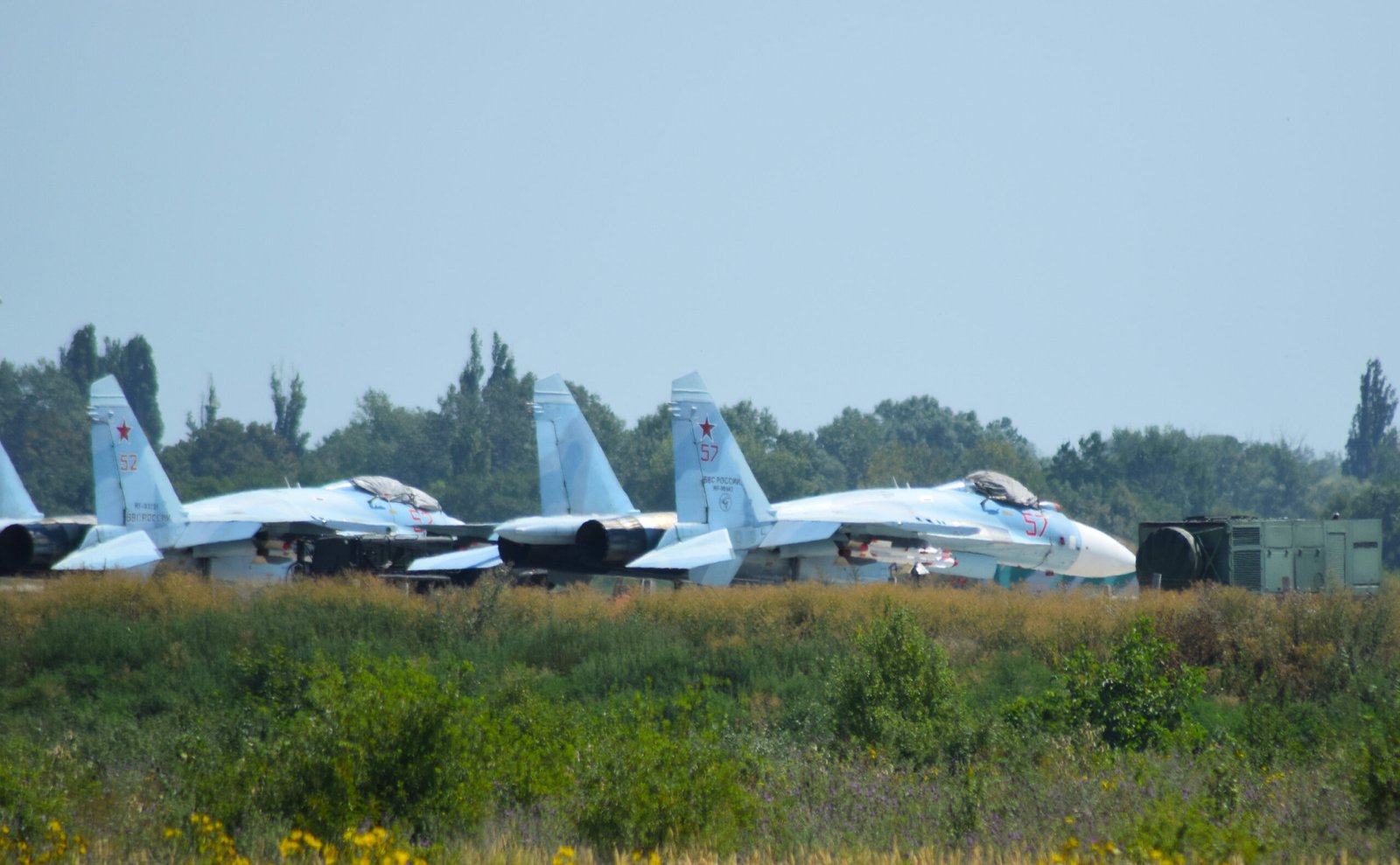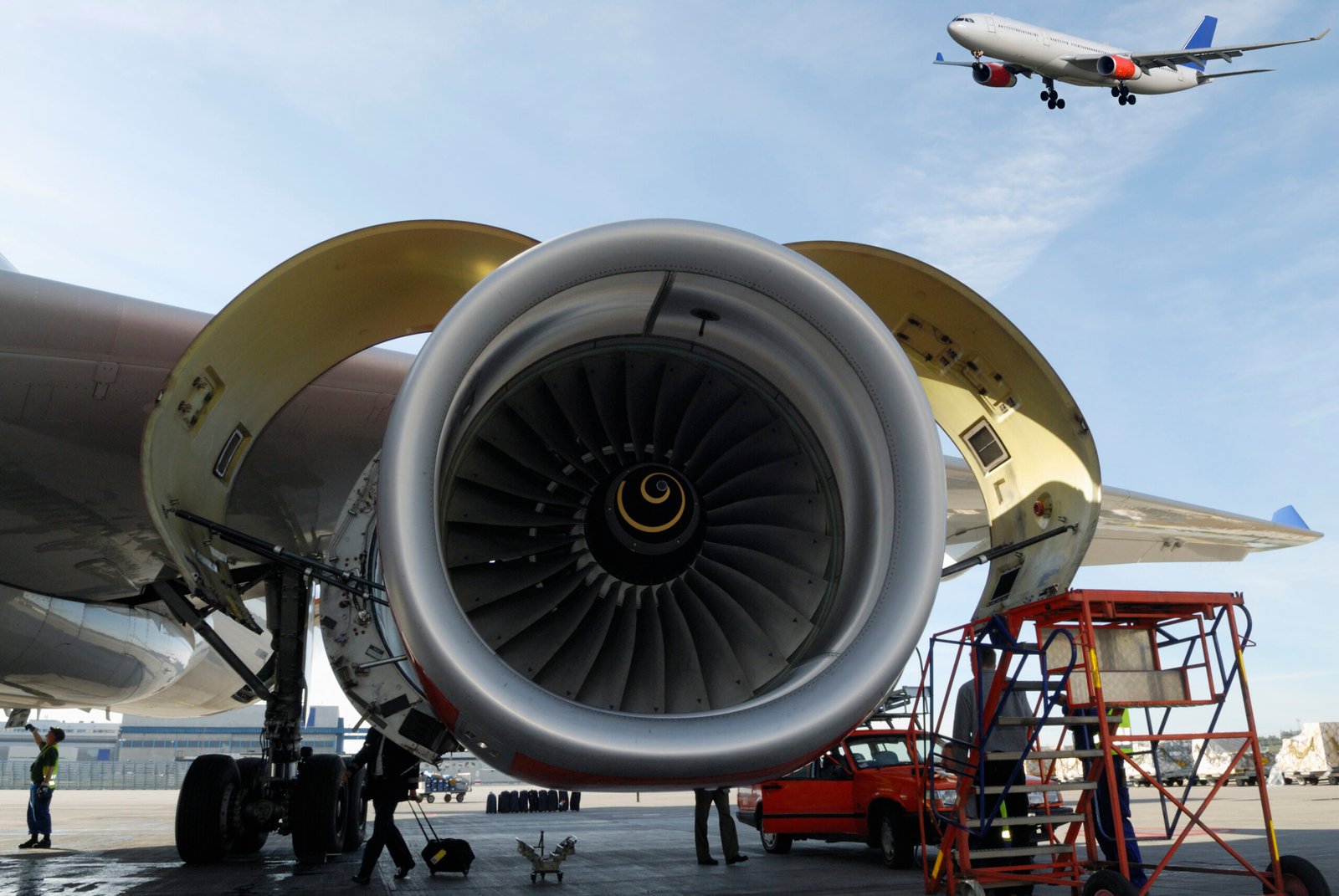aviation technology
Aviation Wonders: Exploring the World’s Most Extraordinary Airports
The world of aviation is an ever-evolving marvel, a tapestry interwoven with technology and human ingenuity. As we soar through the skies, our journey begins even before we board those sleek aircraft. Have you ever considered how training for such adventures unfolds? Aviation and technology training, particularly through sophisticated simulators, plays a crucial role in preparing pilots for the challenges they face. With realistic scenarios and immersive environments, these simulators allow aspiring aviators to hone their skills without leaving the ground.
But let’s not forget that the aviation community extends far beyond just pilots and planes. There exists a wealth of information available online for enthusiasts eager to learn more about this fascinating field. If you’re looking to dive deeper into aviation culture or perhaps stay updated on trends and news, consider exploring popular aviation blogs and websites like AirlineReporter, The Points Guy, or AOPA (Aircraft Owners and Pilots Association). Social media platforms are also teeming with vibrant communities; join hashtags like #aviationphotography on Instagram or follow Twitter accounts dedicated to flight updates.
For those seeking structured education in aviation, online courses abound! Ground schools offer comprehensive programs covering everything from air navigation to meteorology. Many well-respected institutions provide accredited online courses catering to different levels of expertise—whether you’re a novice pilot or someone looking to expand your knowledge base as an airline operations manager. Organizations like Embry-Riddle Aeronautical University and Purdue University Global have made significant strides in delivering quality online education tailored for future aviation leaders.
As one delves deeper into this field, career opportunities become increasingly enticing. Pilot jobs remain at the forefront of many people’s ambitions, but there are numerous paths within the industry—ranging from air traffic control positions to roles in aircraft maintenance engineering. The Federal Aviation Administration (FAA) website is a treasure trove of resources where potential pilots can find valuable links about licensing requirements, medical certifications, and ongoing career developments.
In recent years, drones have emerged as exciting players within aviation’s expanding universe. These unmanned aerial vehicles (UAVs) have revolutionized various sectors—from agriculture monitoring to search-and-rescue missions—while also sparking new discussions around regulations and safety standards. The FAA has been proactive in establishing guidelines for drone usage; it’s essential for operators to familiarize themselves with these rules if they wish to take flight responsibly.

So why should you explore these extraordinary airports worldwide? Each terminal tells its own story—a journey marked by cultural significance, architectural brilliance, or sheer operational complexity. Think of Changi Airport in Singapore with its stunning butterfly garden or Incheon International Airport’s breathtaking art installations! Airports serve as gateways not only across geographical boundaries but also into realms rich with history and adventure.
As we reflect upon the wonders of aviation—from rigorous training methods and educational resources to groundbreaking technologies like drones—we recognize that every aspect contributes profoundly to our shared experience as global travelers. So buckle up! The sky awaits your exploration!
From Vintage to Modern: A Journey Through Aviation History
Aviation, a realm where dreams take flight, has witnessed an extraordinary evolution from its humble beginnings in the early 20th century to today’s high-tech marvels. As we traverse this fascinating journey through aviation history, it’s crucial to recognize how technology and training have reshaped the industry, paving the way for aspiring pilots and enthusiasts alike.
Let’s start with technology training — a cornerstone of modern aviation. Simulators have become indispensable tools for pilot training. Gone are the days when novice aviators would take their first shaky flight in a real aircraft. Today’s simulators offer an immersive experience that mimics various flying conditions, from serene skies to stormy turbulence. These advanced systems allow trainees to familiarize themselves with aircraft controls and emergency scenarios without leaving the ground, significantly enhancing safety and confidence.
For those looking to dive deeper into aviation knowledge, numerous online resources exist. Blogs like “The Pilot’s Lounge,” “AirlineReporter,” and “Flying Magazine” provide insights into industry trends, pilot experiences, and technological advancements. Websites such as AOPA (Aircraft Owners and Pilots Association) offer up-to-date information on regulations and safety tips while fostering a vibrant community of aviation enthusiasts. Social media platforms like Instagram and Twitter have also become hotspots for aviation lovers. Accounts such as @aviationdaily showcase stunning aerial photography alongside news articles that keep followers informed about current events in aviation.

When it comes to formal education, online courses and ground schools have revolutionized pilot training accessibility. Platforms like Coursera and Udemy feature comprehensive courses designed by industry professionals that cover everything from basic aerodynamics to advanced navigation techniques. Ground schools prepare aspiring pilots for written examinations required by regulatory bodies like the FAA (Federal Aviation Administration). These programs offer flexibility for busy individuals balancing work or family commitments while pursuing their dream of soaring among the clouds.
Speaking of careers in aviation, job prospects abound! The demand for qualified pilots continues to grow due to increasing air travel worldwide. Airlines are on the lookout for well-trained candidates who can seamlessly transition from simulators to cockpits. Opportunities don’t stop at airlines; corporate jets, freight carriers, agricultural aviation — each presents unique career pathways catering to diverse interests.
In recent years, drones have emerged as game-changers within both recreational activities and commercial enterprises. These unmanned aerial vehicles are no longer just toys but tools used in various fields including agriculture, photography, delivery services, and even search-and-rescue missions! With drone technology advancing rapidly, regulatory bodies like the FAA are continuously updating guidelines regarding drone operation ensuring safety remains paramount.
To stay informed about these developments or seek guidance navigating through endless opportunities within the field of aviation consider visiting official FAA links which provide essential resources ranging from licensing requirements to safety regulations. Whether you’re an aspiring pilot eager for guidance or a seasoned professional seeking ongoing education—these resources connect you directly with valuable information at your fingertips.
In conclusion, as we reflect upon our journey from vintage biplanes taking flight over open fields to today’s sleek jetliners soaring above urban landscapes; one thing is certain—aviation will continue evolving at an unprecedented pace fueled by innovation in technology coupled with passionate individuals committed towards progress within this thrilling industry! So buckle your seatbelt; the future of flight awaits!

From Runway to Reality: The Transformative Power of Drones
In the realm of aviation, the intersection of technology and training has reached unprecedented heights. The evolution from traditional flight methods to modern innovations like drones illustrates a transformative journey that reshapes both our skies and our training methodologies. As we delve into this airborne revolution, it becomes clear that embracing technology is not just optional; it’s essential for anyone aspiring to soar in the aviation world.

First and foremost, simulators have revolutionized aviation training. Gone are the days when aspiring pilots solely relied on hours spent in real aircraft. Today’s sophisticated flight simulators replicate every conceivable scenario a pilot might face, providing a safe environment for skill enhancement. These simulators range from basic to highly advanced systems, enabling pilots to practice everything from routine takeoffs to emergency landings without risking lives or equipment. This immersive experience cultivates confidence, sharpens decision-making skills, and facilitates better retention of knowledge—making it a cornerstone of modern pilot education.
For those seeking insight into the vast landscape of aviation commentary and expertise, numerous blogs and websites serve as invaluable resources. Sites like *Airliners.net* offer forums for discussion among aviation enthusiasts, while *The Points Guy* provides tips on maximizing travel rewards—highlighting how various technologies can enhance air travel experiences. Additionally, social media platforms such as Instagram and Twitter buzz with accounts dedicated to aviation photography and industry news. Accounts like @AviationDaily or @PilotVlogs engage followers with captivating visuals and updates about current events in the aviation sector.

Recognizing the need for continuous learning in this rapidly evolving domain is crucial. Online aviation courses have surged in popularity, making education accessible regardless of geographic location. Institutions like Embry-Riddle Aeronautical University offer comprehensive ground schools that cater to all levels—from novice flyers to seasoned professionals looking to update their skills amidst technological advancements. Platforms such as Coursera feature specialized courses on drone operations or aerodynamics that allow learners flexibility while diving deep into complex subjects at their own pace.
With this technological boom comes a plethora of job opportunities within the field—especially for pilots trained in drone operation. According to recent FAA reports, commercial drone usage is projected to grow exponentially over the next decade across various sectors including agriculture, real estate, emergency services, and logistics. This demand creates an enticing career path for those who already possess piloting skills or seek certification specifically tailored toward unmanned aerial vehicles (UAVs).
Navigating this new terrain requires understanding regulatory guidelines set forth by authorities like the Federal Aviation Administration (FAA). Their website serves as an essential resource where budding pilots can find information on licenses needed for drone operators alongside safety regulations necessary for compliant flying practices. The FAA’s Remote Pilot Certification program ensures that individuals are well-versed in operating drones safely while following established protocols—a vital component in promoting responsible use as this technology proliferates.
In conclusion, as we transition from runways crafted for manned flights towards expansive skies ripe with possibilities offered by drones, embracing these innovations leads us toward exciting futures within aviation careers—ones filled with endless opportunities for growth and exploration. The synergy between technology training via simulation and online coursework encapsulates a commitment to excellence that will undoubtedly shape tomorrow’s aviators into pioneers ready to navigate uncharted territories above us all!
The History of Aviation: Milestones That Changed the Skies
Aviation is a tale spun from dreams, engineering marvels, and relentless human curiosity. From the first attempts at flight to the modern-day technological advancements that define aviation, each milestone has significantly altered how we traverse our skies. As we delve into this captivating history, it’s essential to consider how technology and training have evolved alongside these breakthroughs.
The journey began in 1903 when the Wright brothers achieved powered flight with their iconic Flyer. This moment opened a gateway to innovation that would only accelerate over the decades. With advancements in materials and aerodynamics came more sophisticated aircraft designs, leading us to the golden age of aviation in the 1920s and 1930s. Fast forward to today, where technology reigns supreme—aircraft are now equipped with state-of-the-art avionics that enhance safety and efficiency.
Training has also transformed dramatically since those early days. Gone are the simplistic methods of yesteryear; contemporary pilot training heavily relies on simulators that replicate real-world flying conditions. These sophisticated systems allow aspiring pilots to hone their skills without leaving solid ground. Simulators provide an immersive experience, enabling trainees to navigate through various scenarios—from routine takeoffs to unforeseen emergencies—without risking lives or aircraft.

In addition to practical training tools like simulators, numerous resources exist online for avian enthusiasts and professionals alike. A myriad of blogs and websites cater specifically to aviation aficionados:
1. **Airliners.net** – A community-driven site filled with photographs and discussions about commercial aviation.
2. **FlightGlobal** – Offers industry news, insights on trends, and reports on aircraft developments.
3. **Pprune.org (Professional Pilots Rumour Network)** – An engaging forum where aviators share experiences and advice.
4. **AOPA (Aircraft Owners and Pilots Association)** – A vital resource for pilots seeking information about regulations, advocacy, and education.
Social media platforms have also become a treasure trove for those passionate about flying. Twitter accounts like @TheFlyingEngineer provide fascinating insights into technical aspects of aviation while Instagram showcases stunning aerial photography through hashtags like #aviationlovers or #pilotlife.
Furthermore, online courses are revolutionizing pilot education by making it accessible regardless of geographical constraints. Ground schools offer comprehensive programs tailored for both novice aviators eager for their Private Pilot License (PPL) as well as seasoned professionals pursuing advanced ratings or endorsements. Websites such as Sporty’s Pilot Shop deliver interactive courses covering everything from basic aerodynamics to advanced navigation techniques.
In today’s rapidly advancing world, drone technology has emerged as another transformative force in aviation history. Initially used primarily for military purposes, drones have found applications across industries—from agriculture monitoring to search-and-rescue missions—and even recreational use among hobbyists! Understanding drone operation is crucial as regulations evolve; resources like FAA.gov provide valuable guidance on certification requirements for drone pilots.
For those contemplating a career in aviation—a field brimming with opportunities—resources abound! Aspiring pilots can explore job boards like Indeed or Glassdoor specifically geared towards aviation careers while networking through platforms such as LinkedIn opens doors within this competitive industry.

The evolution of aviation continues unabated; each advancement builds upon past achievements while propelling us toward new horizons yet unexplored. From cutting-edge simulators aiding future pilots’ training processes to the ever-expanding realm of drones redefining airspace usage—the milestones that shaped our skies are just beginning! Whether you’re an aspiring aviator or merely captivated by flight itself, embracing these developments ensures you remain grounded in this thrilling journey through time aloft.
A Pilot’s Perspective: Adventures in the Skies
As the sun rises and casts a golden hue across the horizon, the thrill of flying beckons. For those of us fortunate enough to don a pilot’s wings, every ascent into the skies is an adventure waiting to unfold. But the journey to become a skilled aviator is paved with rigorous training, innovative technology, and continuous education.
Aviation has evolved dramatically over the past few decades. Today’s pilots are equipped with advanced tools and technologies that were once confined to science fiction. Flight simulators have taken center stage in pilot training, providing an immersive environment where aspiring aviators can hone their skills without leaving the ground. These high-tech devices replicate real-world flying conditions—complete with turbulence, weather changes, and emergency scenarios. Simulators not only save costs but also allow for repeated practice of critical maneuvers until they become second nature.

Alongside simulators, online resources for aviation enthusiasts and professionals abound. Several blogs and websites cater to pilots at all stages of their careers. Some notable mentions include “The Pilot’s Blog,” which shares personal experiences from aviators around the world, and “Flying Magazine,” offering insights into aviation news and trends. Social media platforms like Instagram and Twitter have become bustling hubs for pilots to connect; hashtags such as #PilotLife or #AvGeek draw in thousands sharing breathtaking aerial views or snippets from their cockpit adventures.
For those looking to formalize their aviation knowledge, numerous online courses and ground schools are available today. Organizations such as Gleim Aviation or King Schools provide comprehensive training programs covering everything from private pilot licenses to advanced certifications. The convenience of studying at home while balancing work commitments makes these programs incredibly appealing for aspiring pilots eager to take flight.
But let’s not forget about job opportunities within this dynamic industry! The demand for skilled aviators continues to rise as airlines expand operations globally. Pilots can find positions ranging from commercial airline jobs to corporate flying roles or even cargo transport services. Additionally, niche markets like agricultural aviation or aerial photography provide unique pathways for those looking to carve out a distinctive career in the skies.
We’re also witnessing a revolution courtesy of drones—a game changer in both recreational use and industry applications! From delivering packages to surveying landscapes, drones offer endless possibilities while requiring specific FAA regulations for operation. Pilots who venture into this realm must familiarize themselves with Part 107 rules governing commercial drone usage.
For anyone interested in exploring more about aviation regulations or seeking guidance on becoming a certified pilot, resources from the Federal Aviation Administration (FAA) are invaluable. Their website provides comprehensive information on licensing requirements, safety guidelines, air traffic control procedures, and much more essential data that any aspiring aviator should know.

In conclusion, being a pilot is more than just operating an aircraft; it’s about embracing technology through flight simulations while continuously learning through online courses and connecting with fellow aviation enthusiasts across various platforms. With evolving regulations surrounding drones and consistent demand for qualified professionals in commercial aviation, there’s never been a better time to pursue your passion for flying! So strap in—your adventure awaits high above the clouds!




